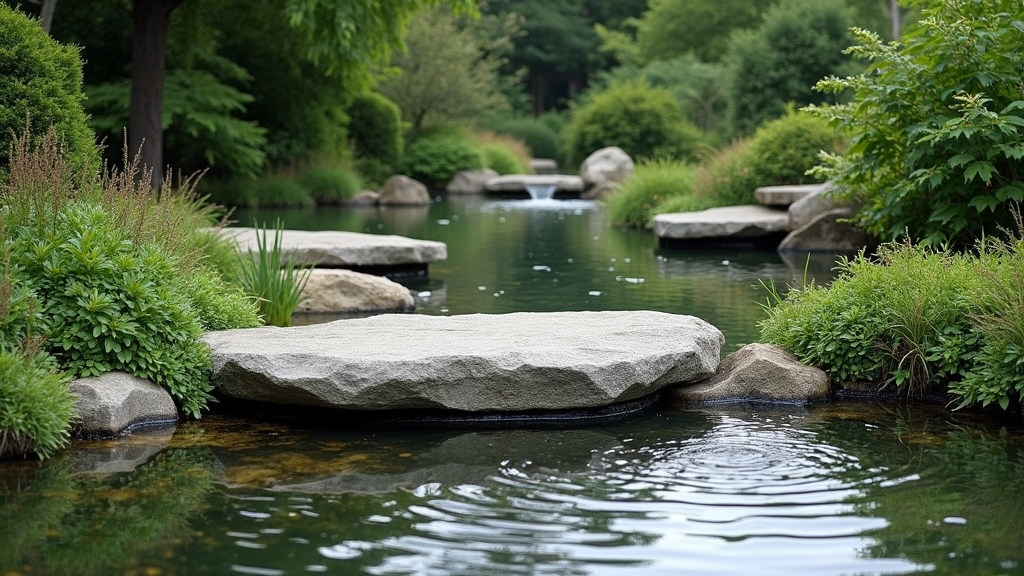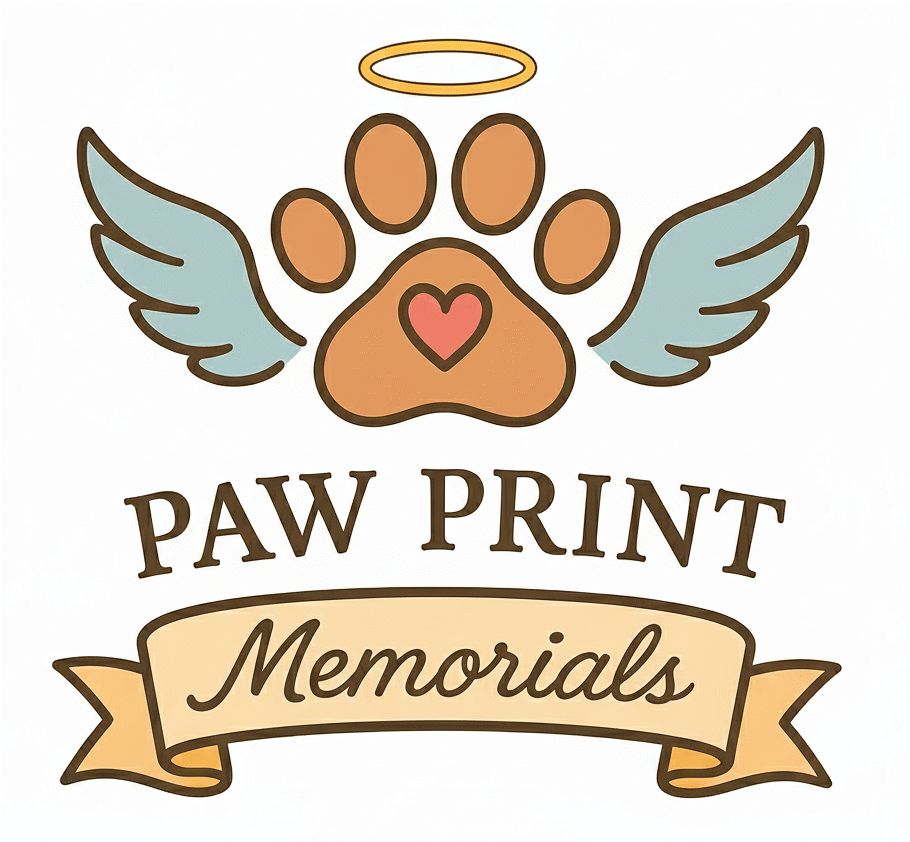Memorializing a cherished pet is both a tender and practical process. Choosing a memorial that truly represents your pet’s unique spirit can help you remember the many joyful moments you shared. This guide offers ideas on selecting a tribute that fits your lifestyle, budget, and emotions. By taking the time to reflect on your pet’s special qualities, you create a lasting reminder that celebrates a life full of warmth and love.

Essential Elements to Consider for a Pet Memorial
Memorializing your pet goes beyond simply placing a marker. It is about celebrating a life that brought comfort and joy. Every decision, from the memorial’s design to its placement, carries deep meaning. Whether you choose a modest engraved stone or a vibrant garden spot, the memorial should serve as a heartfelt reminder of your pet’s unique personality and the bond you shared.
Before deciding on a particular style, it is important to consider both aesthetics and practicality. The memorial might be a simple stone etched with your pet’s name and favorite dates, or it could be a more elaborate tribute incorporating custom art or symbolic objects. In any case, ensure that the tribute feels personal. With various options available these days, from sleek modern designs to rustic, nature-inspired arrangements, there is something to suit every taste and setting.
Taking the time to plan helps you create a memorial that not only catches the eye but also holds deep emotional value. Thoughtful consideration of materials, design, and personal symbols can transform a simple marker into a lasting tribute that both honors and preserves your pet’s memory.
Getting Started with Your Memorial Planning
When you are ready to begin planning, it helps to break the process into manageable steps. Each step is designed to guide you closer to a commemorative piece that embodies the love and joy your pet brought into your life. Although the decisions can feel overwhelming when coping with loss, focusing on your pet’s favorite spots or habits can serve as practical inspiration.
- Reflect on Your Pet’s Personality: Spend some time thinking about what made your pet truly unique. Whether energetic, calm, or mischievous, these traits can influence the style and elements of your memorial.
- Decide on a Memorial Type: Options might include an engraved stone, a small garden tribute, a plaque, or even a custom sculpture. Each type carries its own benefits and may suit different needs and preferences.
- Set a Budget: Since memorial projects can vary widely in cost, establishing a clear budget early on will help you narrow your choices and avoid overspending during this emotional time.
- Review Local Guidelines: If you plan to install the memorial in a public area or cemetery, check local regulations or community standards to ensure your design is compliant.
- Ask Professionals for Guidance: Consulting with memorial designers or pet loss support groups can provide valuable insights to help smooth the way toward your final decision.
Following these steps can help you feel more in control of the process while ensuring that your tribute is both practical and deeply personal.
Points to Consider When Planning a Pet Memorial
While memorializing your pet is a highly personal journey, several practical factors should be kept in mind. By addressing these considerations, you are more likely to design a memorial that is both beautiful and enduring.
- Longevity and Durability: The memorial should be built to stand the test of time. Durable materials such as stone, bronze, or treated wood are popular choices because they can endure harsh weather conditions without losing their charm.
- Design Flexibility: A personalized memorial can incorporate elements like names, important dates, or a brief message. Look for options that allow you to gently integrate these personal touches.
- Maintenance Requirements: Consider the upkeep needed over the years. Outdoor memorials may require occasional cleaning or sealing to preserve their appearance, while indoor tributes might simply need dusting.
- Placement and Environment: The surroundings where the memorial will be placed play a significant role in its overall design. Whether it is a quiet corner in your garden or a chosen spot in a pet cemetery, the setting should complement the memorial’s design and purpose.
Longevity and Durability
The natural aging process of materials can add character to your memorial if chosen wisely. For instance, stone monuments often acquire a graceful patina over time, which can serve as a metaphor for the enduring nature of your pet’s memory. While metal features may offer a modern appeal, they could require periodic care to prevent tarnish.
Design Flexibility
Personalization is key to a heartfelt memorial. Consider memorials that allow you to integrate small details that remind you of your pet’s character, such as engraved names or dates. This flexibility ensures that the tribute remains as unique as the bond you shared.
Maintenance and Upkeep
The long-term look of your memorial depends partly on how much care it requires. It is very important to weigh how often you can commit to maintaining the tribute. A design that combines visual appeal with easy upkeep may ultimately be the most satisfying in the long run.
Placement and Environmental Considerations
Deciding where to place your memorial is as crucial as the design itself. Outdoor locations expose the tribute to the elements, so ensure that the chosen materials can withstand local weather conditions. Whether nestled in a garden or placed in a designated pet area, the memorial’s environment should enhance its overall impact.
Advanced Memorial Ideas and Step Up Ideas
Once you have addressed the foundational elements, you might consider additional ideas that can give a boost to your pet’s memorial. Enhancing your tribute with advanced elements can add layers of meaning and allow the memorial to evolve with your memories.
Interactive Memorial Spaces: Some designs allow for ongoing interaction. For example, a garden memorial might include a dedicated area for seasonal plantings, so that on anniversaries or special days, new blooms can emerge in honor of your pet.
Incorporating Symbolic Objects: Including a few of your pet’s favorite items—like a treasured toy or accessory—can deepen the personal connection. These small touches work together to create a narrative that is uniquely reflective of your pet’s everyday character.
Custom Artwork and Sculptures: Commissioning a piece of art that captures your pet’s distinguishing features is another thoughtful option. Skilled artists who specialize in pet portraits or sculptures can create a moving representation that is both beautiful and meaningful.
These advanced ideas help create a tribute that grows with your feelings and offers a dynamic space for remembrance.
Choosing the Right Memorial Elements for Your Beloved Pet
Selecting the key elements for your memorial involves weighing practical choices against emotional significance. By breaking down your decision into clear categories, you are able to balance style, cost, and personalization effectively.
- Type of Memorial: Decide whether you prefer a permanent symbol such as an engraved stone, a transient tribute like seasonal plantings, or even interactive designs such as water features that capture your pet’s playful nature.
- Material Choices: The feel of the memorial is heavily influenced by its materials. Natural stones and reclaimed wood can provide a rustic vibe, while modern materials like metal and glass offer a sleek, contemporary look.
- Personalization Options: Custom engravings, embedded photographs, or even subtle digital integrations can lift up a memorial and add a layer of intimacy to the tribute.
- Budget Considerations: Memorial projects are available in a range of price points. Establishing a budget early on helps you avoid future compromises and ensures that the final product is both affordable and meaningful.
- Space and Setting: The location intended for the memorial plays a significant role in its design. For a limited space, you might choose a compact design that seamlessly blends with the environment, while larger settings can accommodate more elaborate displays.
By carefully evaluating these factors, you lay the groundwork for a memorial that honors your pet’s memory with beauty and practicality.
Frequently Asked Questions
This section addresses some common questions that many pet owners consider during the memorial planning process.
Question: How do I choose a memorial that captures my pet’s essence?
Answer: Reflect on your pet’s personality, habits, and the special moments you shared. Emphasizing these traits can help you select a design that feels both meaningful and personalized.
Question: What are some durable materials for an outdoor memorial?
Answer: Consider robust options such as stone, bronze, or treated wood. These materials are known for their ability to withstand weather conditions and age gracefully over time.
Question: Can the memorial be updated over time?
Answer: Yes, several designs allow for modifications. For instance, a garden memorial may evolve with new plantings each season, and some markers have space for additional engravings or personal touches later on.
Question: Are there budget-friendly options available?
Answer: Absolutely. Many memorial choices, such as modest engraved stones or simple garden markers, are designed to be affordable while still offering a beautiful tribute.
Question: How do I find professionals who can help create a custom memorial?
Answer: Look up local memorial designers or explore online services that specialize in pet memorialization. Reading reviews and testimonials can help you choose a service that aligns with your vision.
Wrapping up
Choosing the perfect memorial for your pet is a heartfelt process that honors the unique bond you shared. Every decision—from the style and materials to the level of personalization—plays a role in creating a tribute that is both enduring and deeply meaningful. While the planning process may initially feel overwhelming, taking the necessary time to reflect, research, and plan will guide you toward a memorial that brings comfort during challenging times.
This tribute is not only a marker of loss but also a celebration of a life filled with affection, loyalty, and countless joyful memories. Whether your final choice is a simple engraved stone or an intricately designed garden corner, the memory of your beloved companion will continue to live on in a space that reflects both beauty and resilience.
As you move forward with memorial planning, remember that every element you select is a way to honor your pet’s legacy. May your memorial serve as a lasting reminder of the unconditional love and comfort your pet provided, and may it help ease the passage of time with its presence.
**Here’s a little transparency: Our website contains affiliate links. This means if you click and make a purchase, we may receive a small commission. Don’t worry, there’s no extra cost to you. It’s a simple way you can support our mission to bring you quality pet memorial content.**

Hi Laura,
What a beautifully written and compassionate guide—this article truly honors the deep bond we share with our pets. The thoughtful tips, from choosing durable materials to incorporating personal touches, offer both comfort and clarity during a difficult time. I especially appreciated the idea of evolving memorials, like seasonal plantings or interactive garden spaces—it’s a meaningful way to keep the memory alive. Isn’t it amazing how a well-chosen memorial can help transform grief into lasting celebration?
Best Regards
Scott
Thank you so much for your beautiful words. It truly means a lot to hear that the guide resonated with you. You’re absolutely right—a well-chosen memorial can be such a powerful way to transform grief into a lasting celebration of love and companionship.
I also love the idea of evolving memorials. There’s something so comforting about creating a space that grows and changes over time, just like our memories and the healing process. Whether it’s planting flowers that bloom with the seasons or designing a small interactive garden, those personal touches can make all the difference.